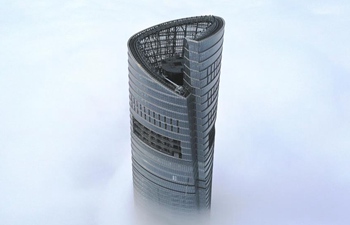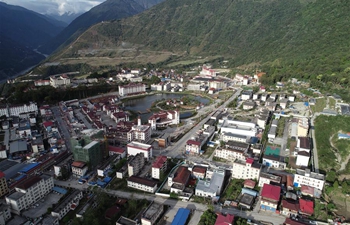GUANGZHOU, April 20 (Xinhua) -- Every year, about 5,000 people with potentially deadly nasopharyngeal cancer (NPC) come to Sun Yat-sen University Cancer Center, the world's busiest medical facility treating NPC.
Ma Jun, an NPC specialist who has worked at the hospital in Guangdong Province for 34 years, says every NPC patient has a heart-wrenching story."As a doctor, you never forget where you start. You want to help them live and help them live better."
NPC is a rare type of head and neck cancer, but it is quite common in Southern China, which accounts for about 47 percent of the world's total new cases every year.
It is sometimes called "Cantonese cancer" as the incidence of 30 cases per 100,000 people in Guangdong is more than 30 times higher than the rest of the world.
When Ma was a visiting scholar in the United States, he found many NPC patients were Chinese-American, and most of their families were originally from Guangdong.
An epidemiology study in 2010 traced the risk gene for NPC back to the Baiyue people, an ethnic group who lived in the area more than 2,000 years ago.
PLAN FOR CHINESE
In 1998, the U.S. National Comprehensive Cancer Network proposed concomitant radiotherapy and chemotherapy along with three courses of intensified adjuvant chemo afterwards to treat patients with advanced NPC. It became the standard treatment for advanced NPC patient around the world.
For years, Ma has wondered if it really worked for Chinese.
In a large-scale randomized controlled clinical study over a period of eight years, Ma found Chinese patients with advanced NPC suffered more side effects than benefits from the additional adjuvant chemotherapy, which cost about 13,400 yuan (about 2,000 U.S. dollars) per patient.
The findings, published in the Lancet Oncology journal in 2012, drew attention from Western counterparts. The United States and Europe revised NPC treatment guidelines.
More recently, Ma added a new drug to the original dual drug chemotherapy regimen, moved post-radiotherapy chemotherapy to pre-radiotherapy.
In another clinical study of 480 cases, Ma and his team found that this regimen could increase the 5-year overall survival rate of patients with NPC by 8 percent.
PRECISION RADIATION
The nasopharynx is in the upper part of the pharynx behind the nose, connecting the nostrils and throat. The location makes it hard for doctors to operate, so radiotherapy is the first choice for NPC patients.
Ma described the early radiation for NPC as carpet bombing, saying it causes collateral damage in the area around the tumor. A "satellite map" is needed for a precision strike.
Ma and his team then put forward the individualized irradiation range and dose standard for NPC radiotherapy. This work draws a clear picture telling where is the high-risk area as well as low-risk area, allowing dose stratification.
In 2014, an atlas of organs at risk in NPC patients was published on Radiotherapy and Oncology. It suggested tailoring irradiation doses and targets, and setting a recommended safety dose for protecting 33 normal organs around the nasopharynx.
Today, the 5-year overall survival rate for NPC patients exceeds 80 percent at Sun Yat-sen University Cancer Center, while the rate for severe side effects from radiotherapy has dropped by 24 percent.
Ma, who has won China's National Science and Technology Awards twice with his team, is grateful to more than 10,000 NPC patients who have participated in his research, saying their bravery is behind the progress in treatment.
"I wish every patient could get precision treatment," he says.

















